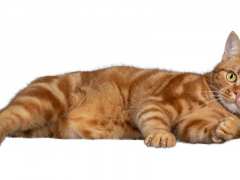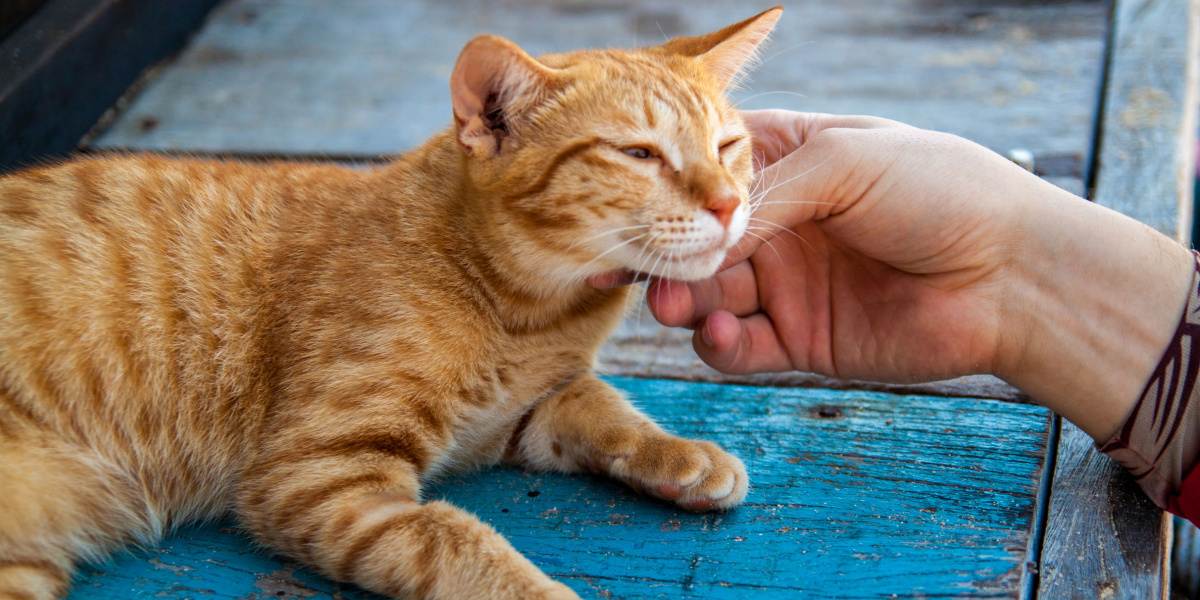
If you have a feline family member, you’ll know that it can be a real worry when they’re unwell. But sometimes, it’s hard to tell whether a cat is showing symptoms of being sick or if it’s just normal cat behavior. Let’s find out what could cause your cat to shiver or shake, what’s normal, and when you should be worried.
What’s the Difference Between Shaking,Trembling and Shivering?
If you think about it, there’s not much difference between shaking and shivering, but the reasons behind them are quite different. Both involve the cat’s body twitching or vibrating quite quickly. Since they’re such similar movements, it might be hard to tell the difference without knowing the underlying cause.
Here are some of the possible reasons:
1. They’re Frightened
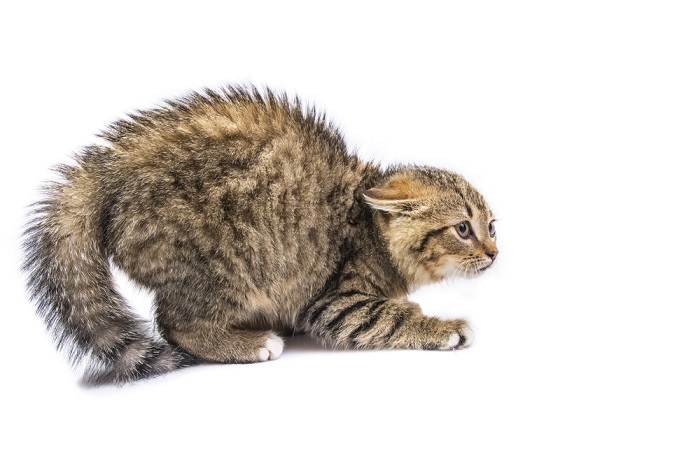
Cats sometimes shiver or tremble when they are very afraid of something.
Sometimes when cats are scared, they tremble. If your cat is shaking or feels like they’re vibrating and something scary is going on, it might be that they’re frightened. It could be that a noisy dog, a thunderstorm, or fireworks are causing their anxiety, so if you notice a possible source of stress, that could be the reason behind your cat’s shaking.
Also Read: 8 Ways To Help a Scared and Fearful Cat Be Confident
2. They’re Dreaming
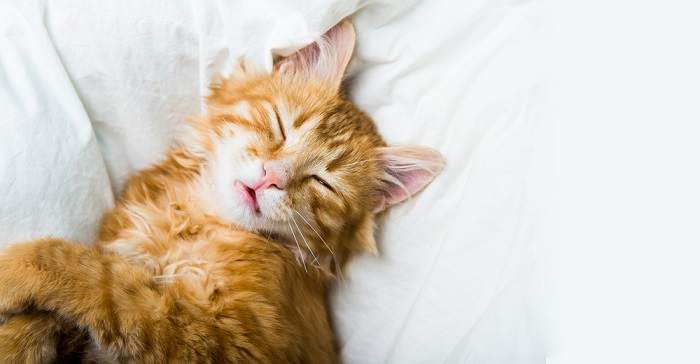
Short moments of twitching during sleep can be a sign that the cat is having a dream.
If your cat is twitching or shaking while they sleep, they might just be dreaming. When a cat sleeps, their brain dissociates from their muscles, to stop them from acting out their dreams. The same thing happens in humans.
However, if they’re in a light sleep and they’re slightly aware of noises or their environment, this could lead to them twitching their paws, tail, nose, ears, or mouth.
Also Read: Do Cats Dream? Science Has the Answer
3. They’re Having a Seizure
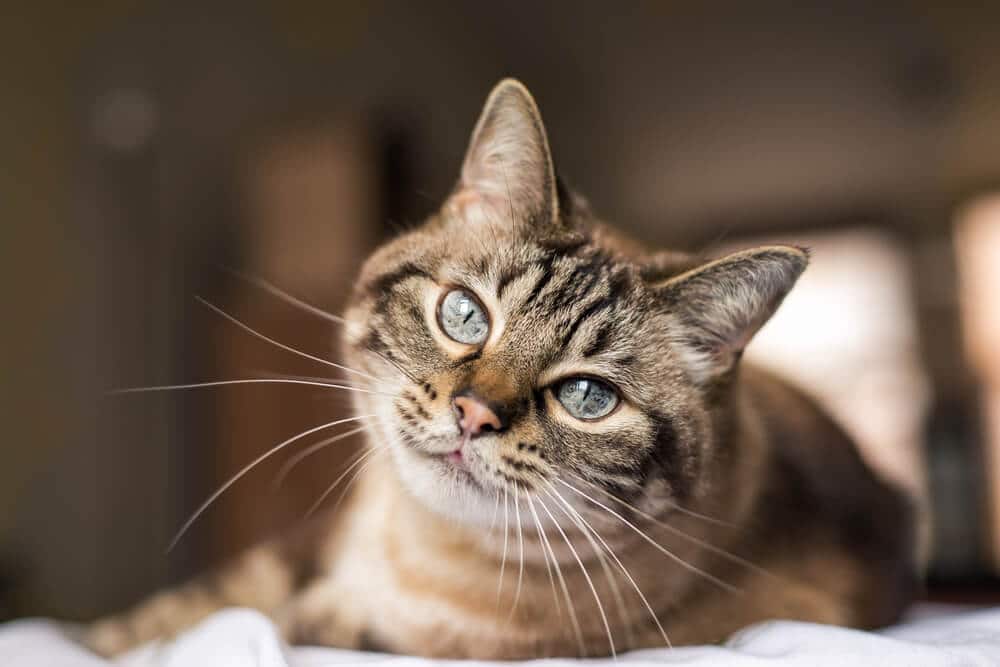
Severe seizures are often unmistakable, but during a mild seizure, you might only notice shaking or trembling.
Seizures are a horrible thing to see, and it’s easy to panic in the moment. When a grand mal seizure occurs, your cat might do a paddling motion with their legs and their body might twitch or shake. You might also notice that they pass urine or feces and open and close their mouth.
It’s best not to approach your cat while they’re having a seizure, as they might bite, scratch, or cause other injuries without realizing it. During a partial seizure, your cat might not lose consciousness, but they might shake or perform another repeated movement of their leg, head, or another body part.
Before and after a seizure your cat might act a bit strangely, and it might be an hour or two before they’re back to normal. Causes of seizures include epilepsy, toxins, head trauma, low blood sugar (hypoglycemia), hyperthermia, and brain tumors.
Also Read: Do Cats Know When You’re Sick?
4. They’ve Had Contact With a Toxin
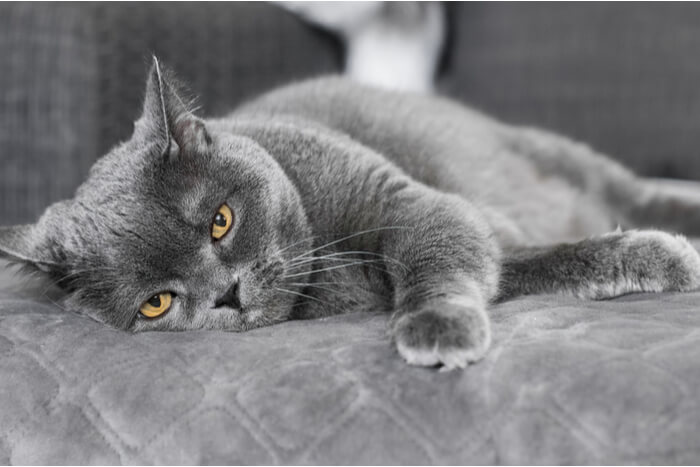
Because poisoning is one cause of shaking or trembling, it’s vital to seek veterinary attention immediately.
Toxins can sometimes lead to tremors, so if your cat could have had contact with a potentially poisonous substance, speak to a veterinarian immediately. Certain flea treatments aren’t safe if ingested.
Also Read: How To Get Rid Of Fleas On Your Cat
5. They Have an Ear Problem
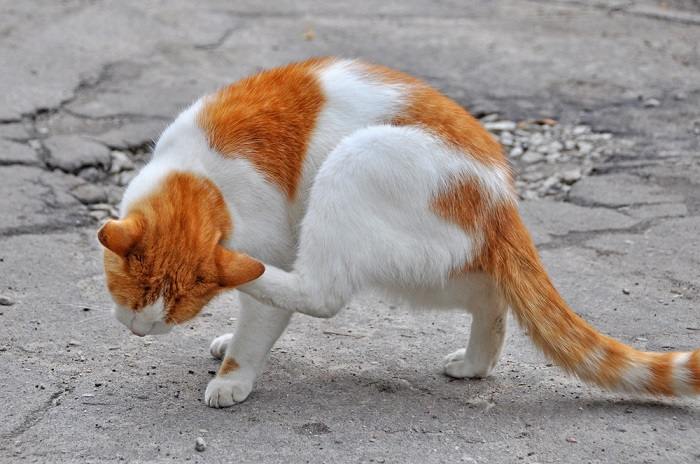
Ear issues can affect balance, which make cause unsteadiness or trembling.
Ear conditions like polyps and inner and middle ear infections can disrupt a cat’s balance leading to a head tilt and sometimes tremors and wobbliness. If your cat has been scratching their ear, their ear is red, smelly, or dirty, or they’re moving as if they’re a bit drunk, it’s time to see a vet.
Also Read: Why Do Cats Put Their Ears Back?
6. They Have Another Neurological Condition

Some serious issues can cause shaking in cats, including brain tumors and vestibular disease.
Other conditions that affect the brain can lead to tremors, including vestibular disease, brain tumors, liver disease, and some protozoal infections. Keep an eye out for other symptoms like a head tilt, seizures, vomiting, reduced appetite, and incoordination.
Also Read: Why Do Cats Tilt Their Heads?
Why Do Cats Shiver?
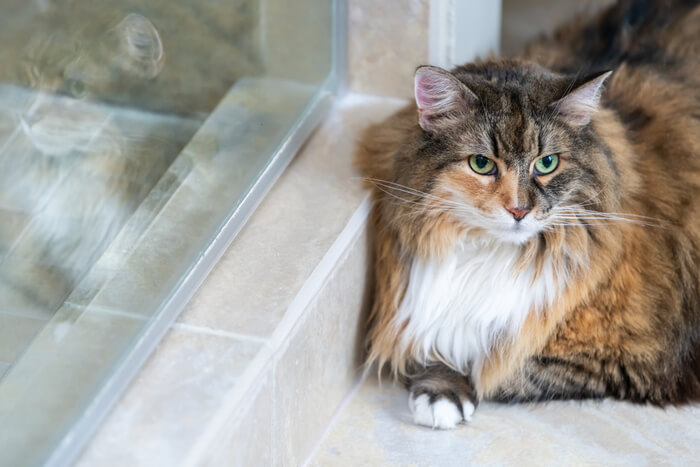
Cats rarely shiver from cold unless their body temperature is so low that they are suffering from hypothermia.
When cats shiver, it usually means they’re cold. Check the dial on the thermostat and see if they might be getting a bit chilly! Jokes aside, it’s unusual for cats to shiver, because their fur keeps them warm and insulated.
So, if your cat seems to be shivering and feels cold to the touch you should take them to a veterinarian right away, as it’s likely that their body temperature has dropped and they might have hypothermia.
On the other hand, cats sometimes shiver if they have a fever. Just like when humans have the flu they may feel feverish and get shivers, the same is true of cats. If you think your cat’s temperature could be too high or too low, you can try to take it using a well-lubricated rectal thermometer, if you have someone to help restrain your cat. Otherwise, it might be worth waiting until you get to the veterinary clinic.
Also Read: Fever In Cats: Symptoms, Causes, Diagnosis & Treatment
How Do You Know if Your Cat’s Shaking Is Something To Be Concerned About?
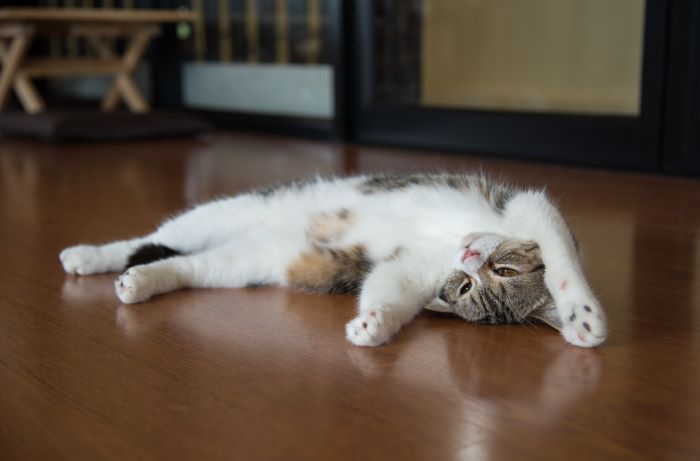
Shaking or trembling is often abnormal in cats, so it’s always best to seek veterinary advice.
If your cat’s behavior changes suddenly, or if they develop new symptoms, it’s always worth booking a health check with a veterinarian. So, if your cat has suddenly started shaking, or if they’ve had a few bouts of shaking recently, it’s time to speak to a vet. Even if they seem well, if their shaking is something you haven’t seen before, there could be an underlying medical reason.
How Can You Help Your Cat Who’s Shaking?
If your cat has started shaking but seems well and is eating, drinking, toileting, and moving around normally, you can try the following tips to see if you can help resolve the problem. However, if they seem unwell or have other symptoms aside from shaking, it’s best to get them checked by a vet urgently.
1. Make Sure They Don’t Have Low Blood Sugar
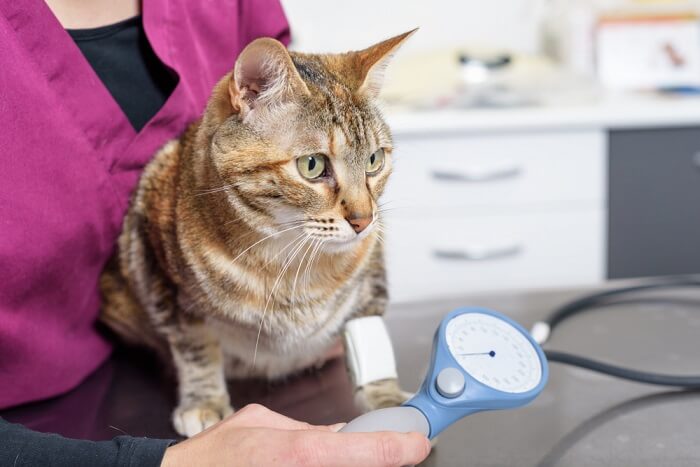
Cats that have gone too long without eating or those with diabetes might develop low blood sugar.
You can quickly treat hypoglycemia (low blood sugar) by rubbing honey on your cat’s gums. This won’t harm your pet, so even if you’re not sure whether low blood glucose is the cause, it’s safe to try. Always follow up with a call to your vet.
2. Make Sure They’re Warm Enough
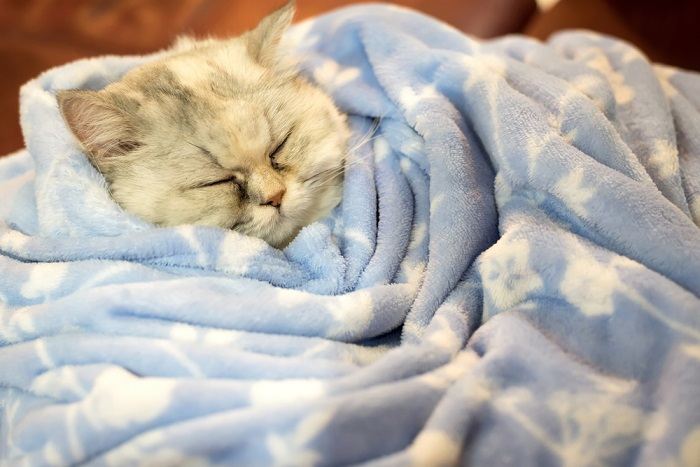
If your cat has been stuck outside in wet weather or when it’s really cold, they could become hypothermic. This can also happen if they’ve recently had sedation or an anesthetic at the veterinary clinic. If your cat feels cold and is shivering, try turning the heating up and provide them with extra blankets and pet-safe hot water bottles or wheat bags.
Also Read: Why Do Cats Curl Into Balls When Sleeping? A Veterinarian Explains
3. Look For Stress Triggers
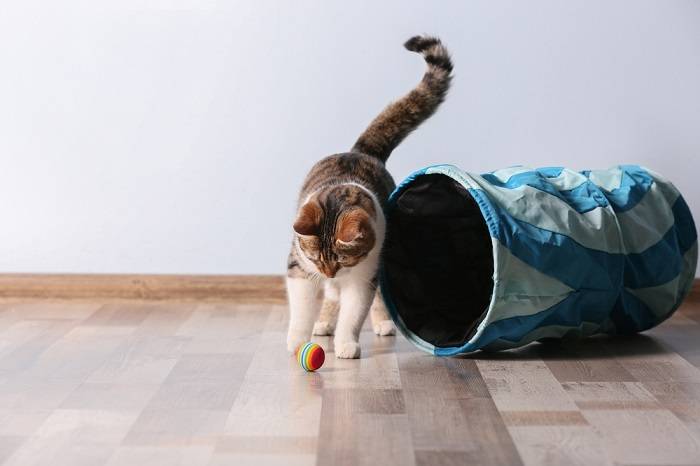
If you think your cat is scared or stressed by something, try to find out what’s causing it.
If you think your cat might be shaking through fear or stress, try to identify the possible causes. If your cat is an indoor cat then consider any recent human or animal visitors, as well as any storms, bad weather, or fireworks. If the stress trigger is identified, you may be able to prevent or control future exposure or help your cat feel calmer.
Also Read: The 12 Best Cat Toys: Keep Your Cat Fit And Happy With These Irresistible Toys
4. Help Them Feel Safe
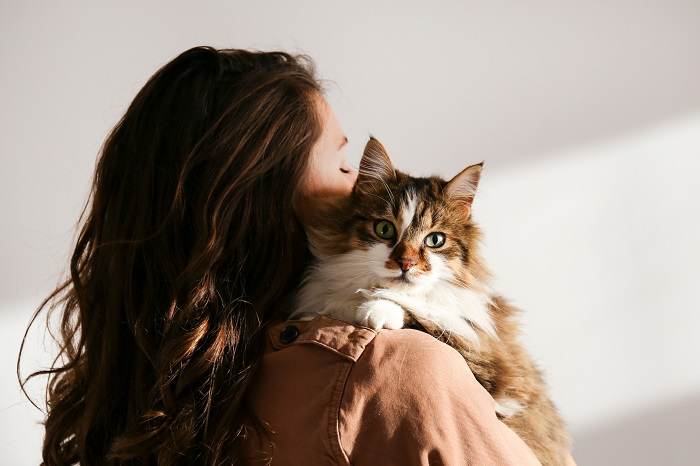
Synthetic cat pheromones can help cats feel calmer and safer.
Using calming sprays and pheromone diffusers can help your cat feel more at ease. You might also want to make a safe space or den where they can hide away from noisy fireworks, flashing lightning, or boisterous guests.
5. Take Them to a Vet
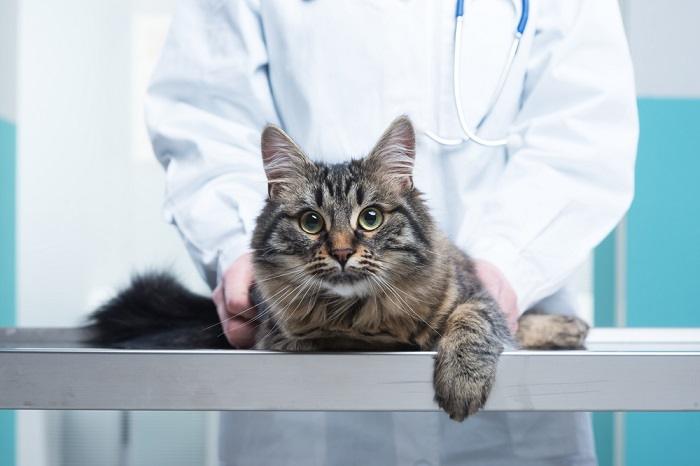
It’s best to get your cat checked out by your vet to rule out any medical causes for shaking or trembling.
If none of the above tips are helping and your cat is still shaking or tremoring, call your veterinary clinic for an appointment. Your veterinarian will be able to check your cat’s ears, test their nerve function, and do blood tests to assess their overall health in order to get to the bottom of their symptoms.
If necessary, they might prescribe treatment including ear drops, antibiotics, or anti-seizure medication, and if they suspect toxicity, they might suggest your cat is hospitalized on a fluid drip.
Also Read: Top 10 Things Your Vet Wishes You Knew
Shivering or shaking might not seem very serious, but if your cat is tremoring or twitching it could be a sign of a health problem. If you’re worried that your cat is acting unusually or their behavior has suddenly changed, make sure you get them checked by a veterinarian as soon as possible, just in case.


